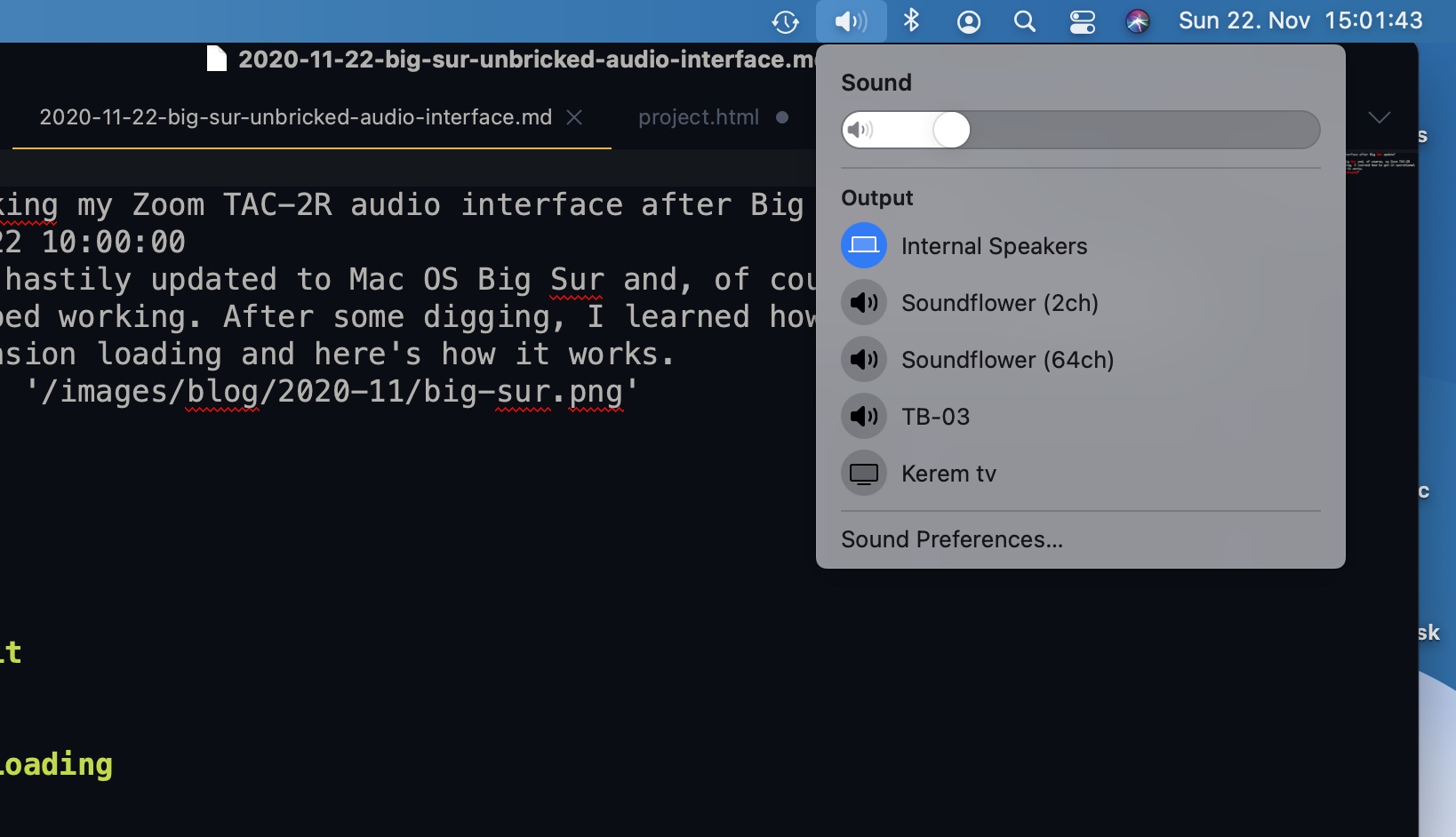The TAC-2R is a desktop audio interface made by Zoom (not the video Zoom, the audio equipment Zoom) for turning analog signals from microphones, guitars, drum machines or synthesizers into digital inputs for audio software to record / stream. It also performs the opposite and provides high-quality audio output from your computer to external speakers and monitors.
It’s safe to say that it’s one of the most important pieces of audio equipment in home studios and I basically can’t work on anything once it’s gone.
# How I broke my audio interface
This is the easy part, as the Mac OS prompt appeared for a system upgrade, I clicked away and bricked1 away! As someone who has over ten years working with audio equipment and software compatibility following upgrades, I should have known better. Usually I wait a couple of weeks before making the plunge to the latest OS for exactly this reason.
You’ll often see blog or user forum posts with early users reporting ‘device not working on latest OS version pls help’. Most manufacturers or software vendors respond quite quickly to user feedback and put out patches or new drivers, but this time I dove right in before waiting to read reports on compatibility. After the update and a system restart, I noticed the power-indicator LEDs were all off - no signs of life.
# Reviving an audio interface from the dead
My first steps were to download new drivers for the interface. You can get them directly from Zoom’s support page for the device. The latest version of the drivers was released on 5/11/2020, so I thought maybe they had early access to a build to ensure compatibility? I installed the latest driver, everything looks good.
Great job everybody! Unfortunately the device was still dead to the world, so next up is the downloads page for the interface to see if there’s something I missed, and sure enough, there’s an installation guide which I skipped because why would I read the documentation?
It didn’t provide any magic steps to get it working, but it did show a screenshot under Check the (installed) version under:
System Report -> Software -> Extensions
I’ve no idea what I’m looking at here, but I can gather the following details:
-
Version: 2.1.5- the latest version is installed
-
Notarised: Yes- shouldn’t be flagged as malicious
-
Loadable: True- it’s… loadable
-
Loaded: No- looks suspicious
# How to load kernel extensions
So I’ve installed the latest drivers and I’ve read the documentation. It was becoming clear that if I was ever going to get this bricked audio interface to work, I would have to break out the most sophisticated hacking tool available and I promptly Googled “how to load software extension mac os”.
It turns out there’s a command line utility kextload for loading software (kernel) extensions in Mac OS and a companion utility kextunload which, you guessed it.
It takes the path to the kernel extension (.kext file) and will try to load it.
I ran it giving it the path of the Zoom extension from the Software Extensions panel:
sudo kextload /Library/Extensions/ZOOM\ TBTAudio.kext
Executing: /usr/bin/kmutil load -p /Library/Extensions/ZOOM TBTAudio.kext
It’s alive, great job everybody! After rebooting my system, I can use the audio interface as before without any issues and it’s picked up in Ableton / other DAWs. I can assume that there’s probably some minimal step missing from their installation script to load this kernel extension as usual.
To any other early adopters who took the plunge and ended up with a dead Zoom TAC-2R, let this be the assist you needed right now!
Update: I want to say thanks to readers who reached out to say this post was helpful - I haven’t had the time to respond to everyone who submitted a message, but I’m glad to see that this hack was useful.
If I haven’t gotten back to your mail, feel free to ping me on Bluesky 🙌
-
OK it wasn’t really bricked, not irreversibly rendered as useful as a brick but from first experience, the device was no longer recognized, that’s how useful the interface was to me. ↩
Published:
